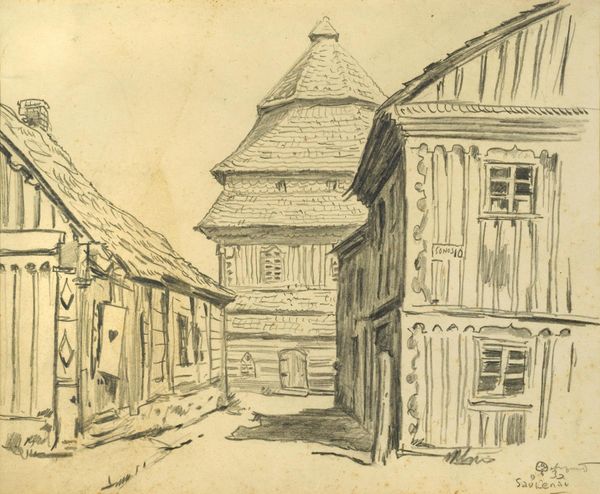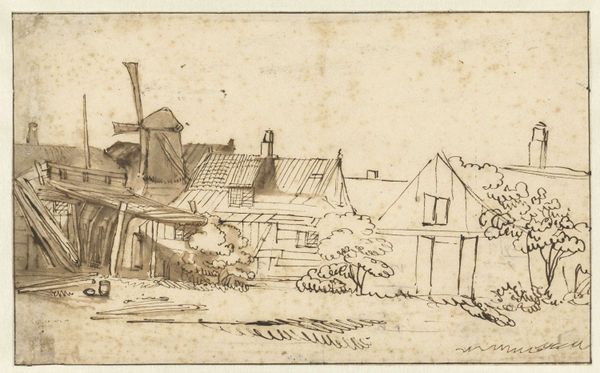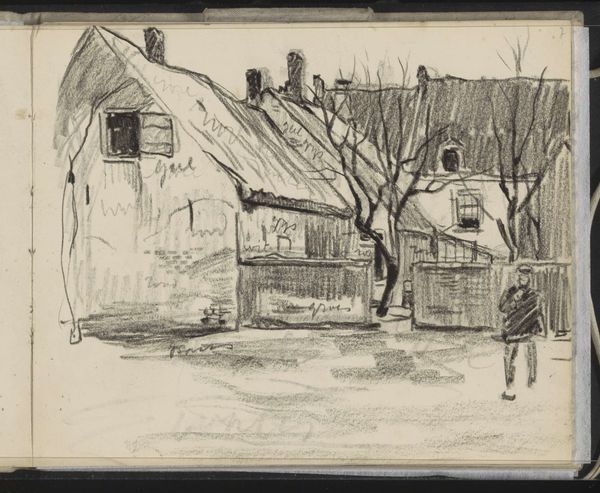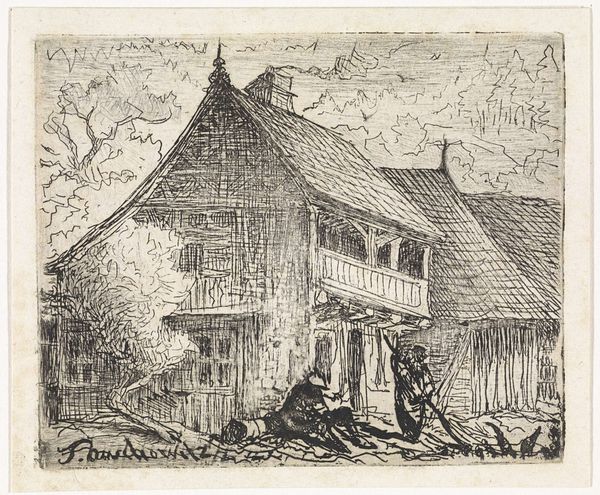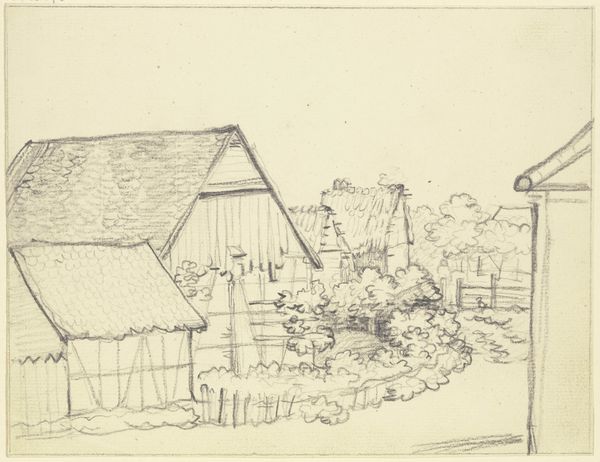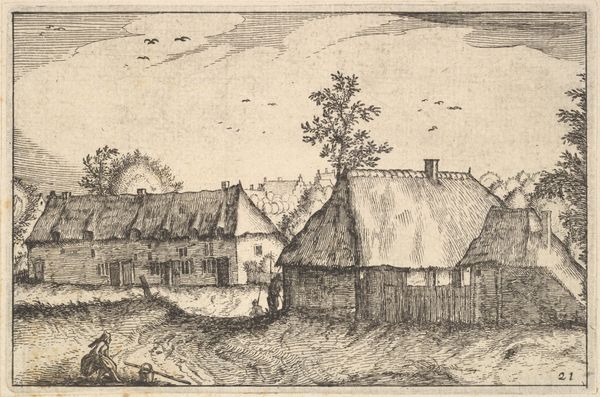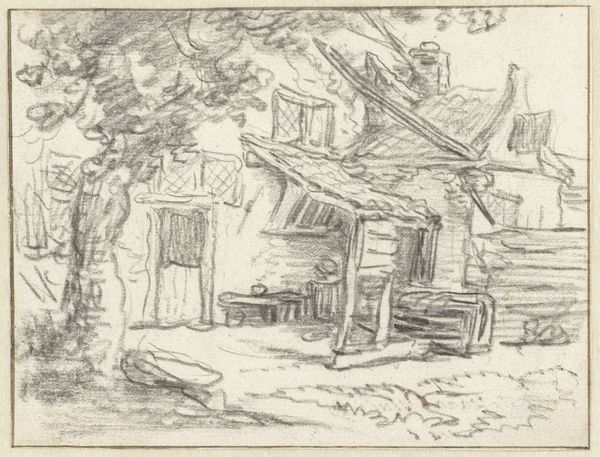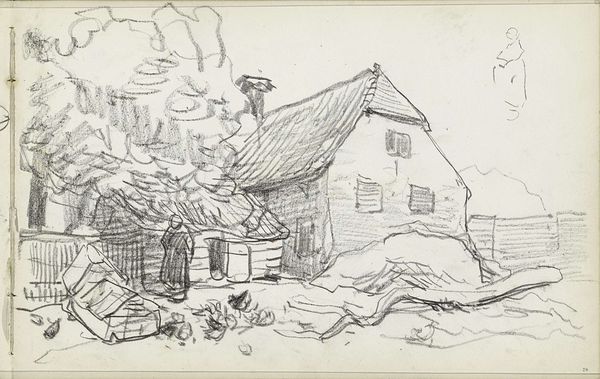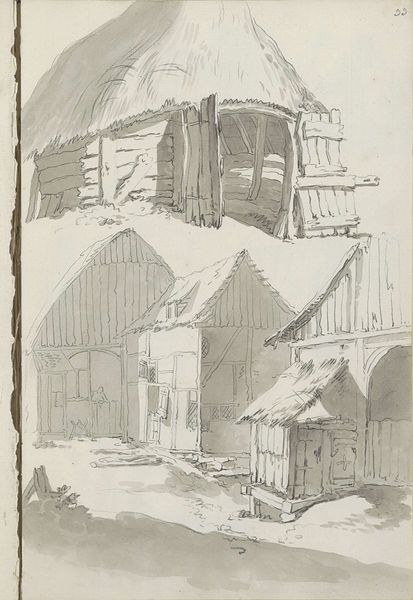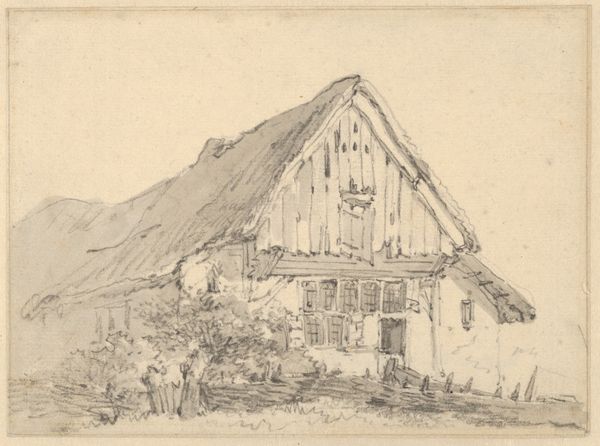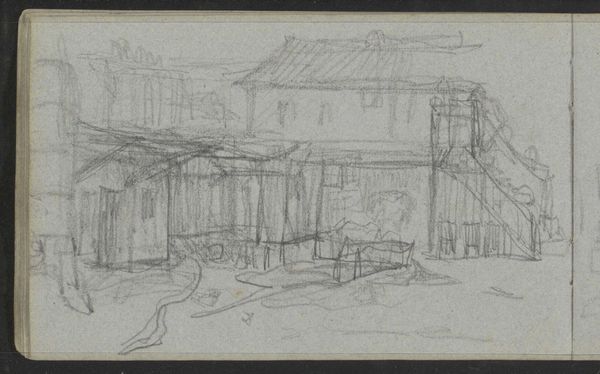
drawing, plein-air, watercolor, ink
#
drawing
#
pen sketch
#
plein-air
#
landscape
#
watercolor
#
ink
#
genre-painting
#
watercolor
Copyright: Rijks Museum: Open Domain
Curator: Let’s turn our attention to this lovely, understated landscape. It’s entitled "Vakwerkhuis bij de berg Podhorn in Marienbad," which translates to "Half-Timbered House near the Podhorn Mountain in Marienbad." It's by Johannes Tavenraat and was created in 1869. Editor: My first impression is of the humble materials used to create this drawing, there is just pen, ink, and subtle washes of watercolor, to conjure an image of simple country architecture. It conveys such a quiet, serene mood; a certain quaintness of the everyday. Curator: Yes, "quaint" is a good word for it. I think it invites us to consider the social context in which such images circulated. During the 19th century, there was a growing interest in romanticizing the countryside, a movement of cultural nationalism that constructed ideas of idealized nationhood rooted in particular place and history, like in this drawing that captures a specific house in Marienbad. It certainly speaks to ideas of 'Heimat'. Editor: Absolutely. The materiality also grounds this within very practical considerations. Was it created “en plein air?” How quickly did the artist render these lines and shadows? Was this intended as study? The deliberate choice of a readily transportable, affordable medium like pen and watercolor suggests an impulse to capture an immediate impression or record it quickly, economically. Curator: I see it in the same vein. The choice to use watercolors here also subtly mirrors the era’s rising interest in documentation and preservation. Art was increasingly seen as a way to safeguard traditions and architectural styles perceived to be disappearing or changing. This image offers insight into regional building practices, for example. Editor: That makes me consider the consumption of images like this, or their purpose. What labor did the production of the house depicted require, or for whom did it provide a service or function? If we extend this into the material qualities of the image itself: the price for pen, paper, and ink for the artist; who would be its prospective owners, what economic and cultural needs might this image have met for them? Curator: Viewing this through both lenses, from both materiality and cultural symbolism, offers us deeper knowledge than if viewed by just one on its own. Editor: Precisely. The ink, watercolor and paper combined with considerations of labor and ownership, bring both art and life together and into clearer focus.
Comments
No comments
Be the first to comment and join the conversation on the ultimate creative platform.
